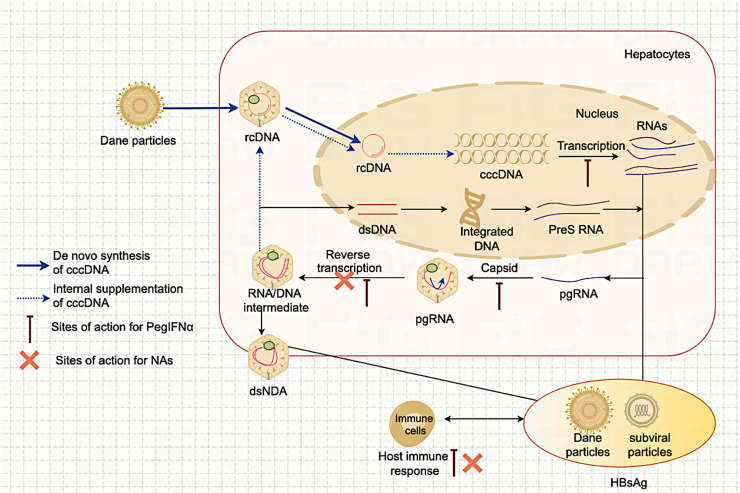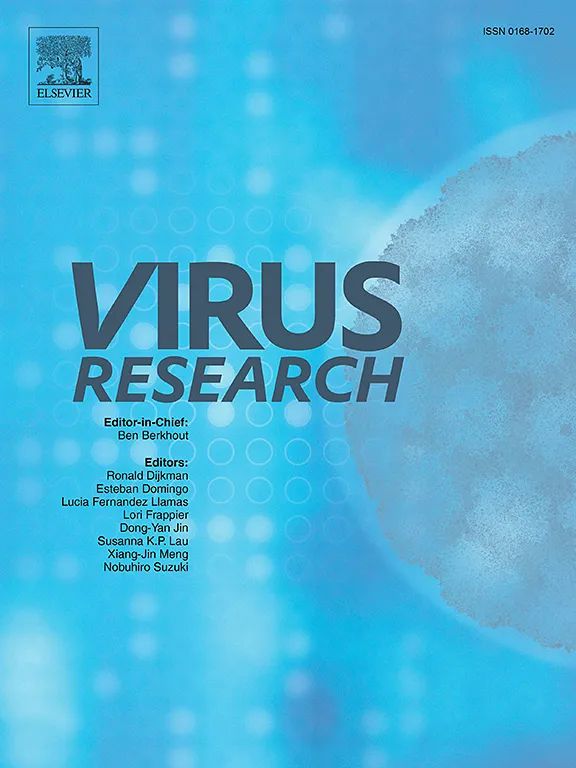实现慢性乙型肝炎功能性治愈:因素和潜在机制。
IF 2.7
4区 医学
Q3 VIROLOGY
引用次数: 0
摘要
慢性乙型肝炎(CHB)是一个重大的全球健康问题,影响全世界约2.54亿人。实现乙型肝炎表面抗原(HBsAg)的丢失,无论是否血清转化为乙型肝炎表面抗体(HBsAb),都被认为是功能性治愈和解决CHB的最佳目标,可以通过各种方法实现,包括用核苷(t)ide类似物(NAs)诱导,用聚乙二醇化干扰素α (PegIFNα)诱导,以及HBsAg的自发清除。HBsAg的自发清除是罕见的,而NAs可以直接抑制HBV DNA,它们不能作用于共价闭合环状DNA (cccDNA),因此抑制HBsAg的产生或清除HBsAg极具挑战性。另一方面,基于PegIFNα的功能治愈显示出良好的长期持久性,但超过10%的患者仍然会复发,大多数在功能治愈后48周内复发。影响慢性乙型肝炎抗病毒治疗功能治愈的因素比较复杂,包括宿主因素、病毒因素、环境因素等。HBV DNA整合入肝细胞、HBV cccDNA持续存在、B细胞反应不足和T细胞功能受损对HBV清除构成显著障碍。因此,本研究系统综述了影响CHB功能治愈的相关因素和潜在机制,可为个性化治疗提供依据,有助于预测治疗结果和评估预后,并为开发新的治疗策略和药物提供理论支持。本文章由计算机程序翻译,如有差异,请以英文原文为准。

Achieving chronic hepatitis B functional cure: Factors and potential mechanisms
Chronic hepatitis B (CHB) is a significant global health issue affecting approximately 254 million individuals worldwide. Achieving the loss of hepatitis B surface antigen (HBsAg), either with or without seroconversion to hepatitis B surface antibody (HBsAb), is regarded as a functional cure and the optimal goal for addressing CHB, and can be achieved through various approaches, including induction with nucleos(t)ide analogues (NAs), induction with pegylated interferon alpha (PegIFNα), and spontaneous clearance of HBsAg. Spontaneous clearance of HBsAg is rare, while NAs can directly inhibit HBV DNA, they are unable to act on covalently closed circular DNA (cccDNA), hence inhibiting HBsAg production or clearing HBsAg is extremely challenging. On the other hand, functional cure based on PegIFNα shows good long-term durability, but over 10 % of patients still experience relapse, mostly within 48 weeks after functional cure. Factors related to CHB functional cure with antiviral therapy are complex, including host factors, viral factors, environmental factors, etc. The integration of HBV DNA into liver cells, persistence of HBV cccDNA, insufficient B cell responses and compromised T cell function pose significant barriers to HBV clearance. Therefore, this study systematically reviewed the relevant factors and potential mechanisms influencing functional cure CHB, which can provide a basis for personalized treatment, help predict treatment outcomes and assess prognosis, and provide theoretical support for the advancement of novel treatment strategies and medications.
求助全文
通过发布文献求助,成功后即可免费获取论文全文。
去求助
来源期刊

Virus research
医学-病毒学
CiteScore
9.50
自引率
2.00%
发文量
239
审稿时长
43 days
期刊介绍:
Virus Research provides a means of fast publication for original papers on fundamental research in virology. Contributions on new developments concerning virus structure, replication, pathogenesis and evolution are encouraged. These include reports describing virus morphology, the function and antigenic analysis of virus structural components, virus genome structure and expression, analysis on virus replication processes, virus evolution in connection with antiviral interventions, effects of viruses on their host cells, particularly on the immune system, and the pathogenesis of virus infections, including oncogene activation and transduction.
 求助内容:
求助内容: 应助结果提醒方式:
应助结果提醒方式:


